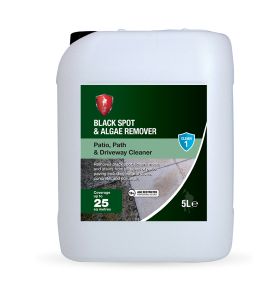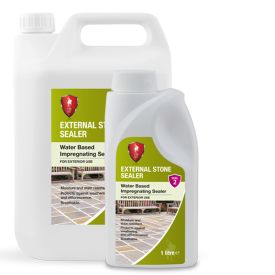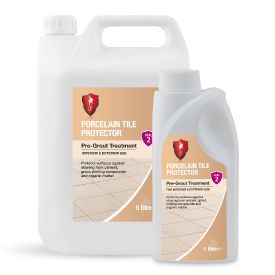
Algae build-up can be a problem on paths, steps, driveways and patio areas, creating a slippery residue and a hazard underfoot. Algae tends to flourish in damp, shady and humid areas and, in the UK, build-up is especially common in the autumn and winter.
Different types of algae
Algae comes in different forms and often causes a green film or powdery deposit on pavers. The term algae also includes cushion-like moss; Liverwort, which is a flat green growth with tiny leaf-like lobes, and Lichen, which is more crust-like and can also be yellow or orange. Jelly-like growths are also common; they’re often black or dark green and these are caused by a cyanobacteria called Nostoc. None of these growths are hazardous - infact, lichen is particularly common in areas with clean air, so its appearance can be a positive sign – but slippery hard surfaces can be.
Another common problem is black spot – a speckle-like deposit that can be black or white. Black spot is a dust-like lichen that originates from plants and trees. It colonises on pavers, sending tendrils or ‘hyphae’ down into any cracks or porosity, searching for nutrients. It takes about 2-3 years to become established below the surface and it creates a slippery residue on the surface of pavers.
Addressing problem areas
Why water doesn’t work
A pressure washer and often a dose of household cleaner is a common go-to solution for slippery pavers. However, excessive water only makes conditions even better for algae to flourish and pressure washing can damage the surface of the pavers, any sealer applied and it will loosen grout. Water also won’t target hyphae or filaments anchored into place below the surface. A specialist approach is necessary to effectively remove residue and microspores below the surface; any treatment used needs to break-down the slippery residue: to have a bleaching action to restore the colour of the paver, and to target any growth below the surface.
Care should be taken in selecting a suitable treatment. If a solution is acidic, it will damage acid sensitive material and erode the grout joint. We recommend LTP Black Spot & Algae Remover which can be safely used on all types of natural stone, concrete, brick and porcelain. This treatment removes all types of organic residue, slippery matter and stains, breaking down hyphae below the surface, as well as preventing regrowth. When applying the Remover, it’s also important to treat the whole area of paving, for a uniform appearance.

Removing large deposits and applying LTP Black Spot & Algae Remover
Before washing pavers, any large, mossy deposits should be removed. A long-handled block paving brush is a useful tool. The whole area should then be swept clean to remove other residue, dirt and leaves.
LTP Black Spot & Algae Remover should be applied neat to swept pavers, using a watering can or light pressure garden spray, where it fizzes during treatment. It should be left to act for 2-4 hours and surfaces then hosed with clean water. The solution can be used on dry and slightly damp surfaces and should be applied during a morning or afternoon of fair weather. See a video aid on the product page.
After treatment, it’s worth protecting the surface; we recommend LTP External Stone Sealer for natural stone and barrier treatment, LTP Porcelain Tile Protector, for matt porcelain pavers. Both will help prevent the absorption of moisture and organic particles, reducing staining and the spread of algae.


For more support and advice, browse the LTP blog, visit and subscribe to LTP TV on YouTube or contact the LTP team on tel. 01823 666213 or email [email protected]



